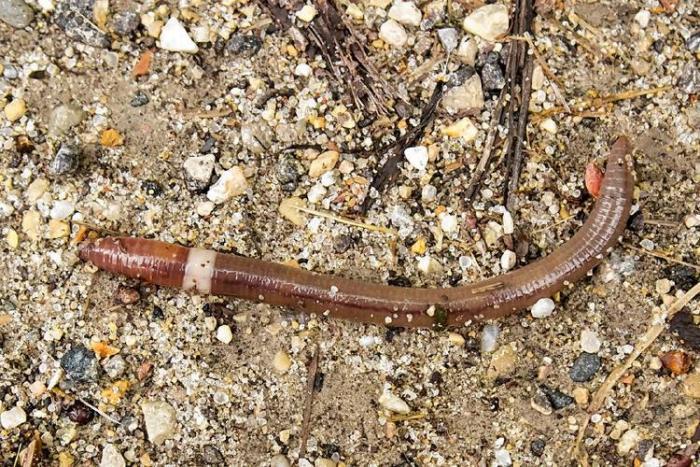New England has been invaded, but not in the way you may think – jumping worms have taken root in the soils of New England farms, gardens and properties, causing severe effects on the ecology of these areas.
On Thursday, March 28, the University of Rhode Island’s Master Gardener Program hosted a talk titled “Spread, Impact and Control of Jumping Worms” as part of the Cooperative Extension program.
Professor Josef Görres of ecological soil management at the University of Vermont, the sister land grant institution of the University of Rhode Island, spoke at the event.
Jumping worms are regarded as invasive species but are not regulated, Görres said. They are characterized by being unusually active during the summer months and have a light band that goes around the body of the worm.
Not many studies have been done on the impacts of jumping worms, but we do know some things, Görres said. Their impact begins when they modify the soil to create a loose casting layer, which changes the soil from an organic soil to a mineral soil.
Additionally, jumping worms have a wide range of ecological impacts on the areas they infest, Görres said. These effects include the facilitation of invasive species to the area and a change to the ecosystem’s nutrient cycle.
When they are introduced to forests, jumping worms can create a loss of biodiversity in the area and have been noted to create a reduction in the regeneration of maple trees, Görres said. While there have been studies done on the effects jumping worms have on horticultural crops, the cost of invasion is still unknown.
Jumping worms originally came to the United States in the 1600s from Europe and a second wave came from Asia in the late 1800s, Görres said. The worms can survive here because they are at the same latitude line and we have similar climate zones.
“We shouldn’t be surprised,” Görres said.
Despite the widespread effects jumping worms have, there are ways to control, prevent and eradicate them.
Jumping worms are spread mainly through human activity and flowing water, Görres said. Being mindful of the activities you do when caring for your garden can go a long way in preventing them from infesting your garden and spreading.
Instead of exchanging grown plants with others, Görres encouraged listeners to exchange seeds or root cuttings instead. Görres also told readers they could do their yard and waste management on their property instead of taking it to the dump where it could become infested or spread the infestation.
If you have to purchase compost, Görres recommended purchasing it from a reputable commercial composter because they are aware of the problem and should be ensuring that their compost isn’t infested.
If you do find that your garden is infested with jumping worms, there are some things you can do to contain and eradicate them.
First, Görres advised gardeners to collect the worms and put them in a bucket of soapy water. This will help to prevent further erosion in the garden. You can talk to the department of agriculture in your state to learn more about pesticide regulations and what you can use.
Gardens and horticultural outlets have served as good breeding grounds and environments for jumping worms to live in. Besides the invasion of New England, there has also been a recent invasion of jumping worms into Canada, Görres said.
Around 1,000 people signed up to listen to the virtual talk from universities all over New England and the east coast.
URI’s Cooperative Extension program serves as the community outreach aspect of the land grant institution’s mission. Through this extension program, members of the community can engage with science-based resources the University offers.
For those interested in signing up for the Master Gardener program, applications for the 2025 course are due by Nov. 1, 2024 on the Cooperative Extension website.

